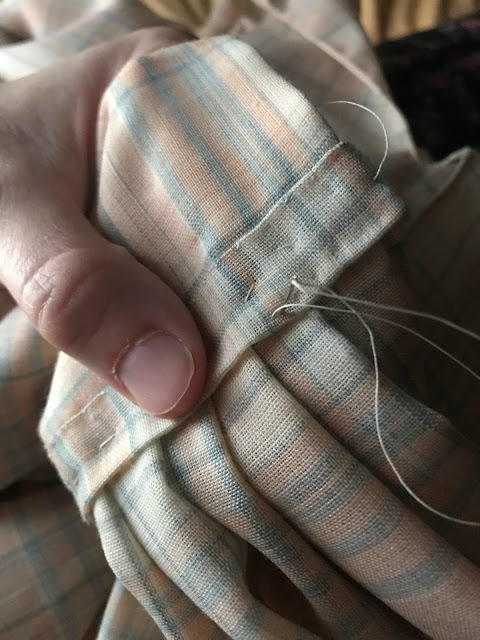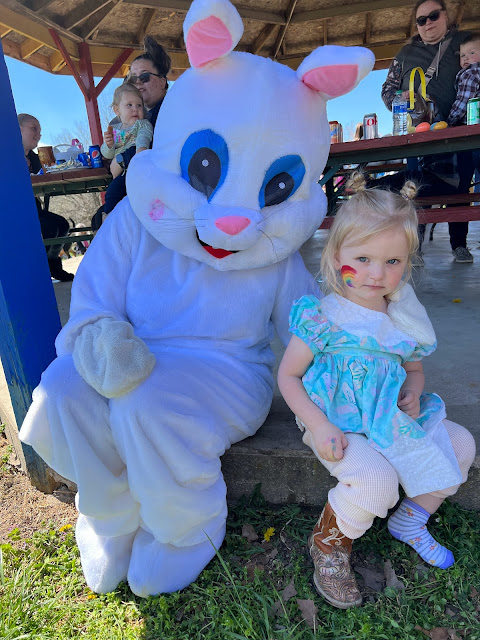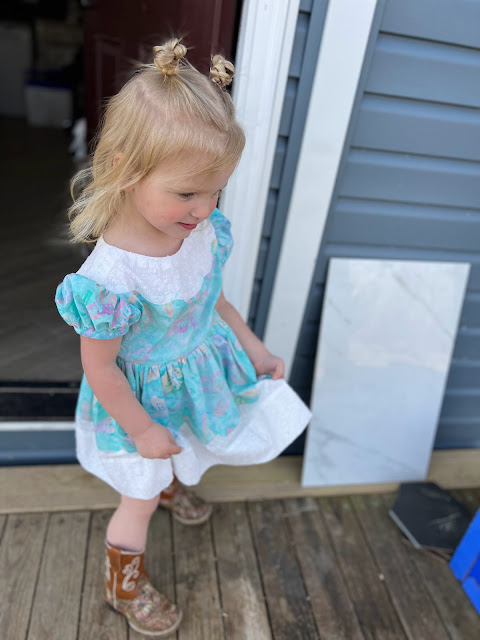Years ago, when I made my white Regency dress I planned, and began, a Regency bonnet to go with it.
The bonnet would be made from a thrifted braided straw hat, and it would be trimmed with some vintage blue moiré ribbon a lady from church had given me.
I undid all the stitching on the brim of the big straw hat, unwound the braid, soaked it in water, then started re-winding it in the bonnet shape I wanted and hand sewing it in place.
This was very tedious work, and at some point I gave up - abandoning the project for 6 or 7 years. I just completely ignored my need for a Regency bonnet and made do without.
Until I couldn’t. Last summer I had to admit I really did need a bonnet to wear with my new plaid dress for the fashion show.
Thus, back at my parents’ for a weekend I unearthed the abandoned in-progress bonnet.
It was certainly a little worse for the wear. It was rather crushed, some of the braid had broken, and there were still pins in the thing.
When I began this bonnet I’d intended to make it in an approximately 1805 style. Now I needed it to be in more of an 1815 style, so the first thing I did was undo some of my earlier hand sewing.
Then I soaked the thing in hot water and re-shaped it.
The re-shaping was accomplished with an empty ginormous barbecue sauce jar and a skillet lid that I found in my mom’s kitchen.
Once I had the crown satisfactorily re-shaped, I started messing with the brim.
I re-soaked the brim,
Then started coiling, holding things in place with little clips, and sewing.
By hand.
I did a little bit of hand sewing on the bonnet that weekend, and then was forced to abandon it, so I could finish my dress, until the night before the fashion show.
According to the time stamps on my pictures, I picked the bonnet up again about midnight that night.
I was clearly out of time to hand-sew, so I resorted to the sewing machine to finish the brim.
Which worked wonderfully.
10 minutes later I was trimming it with my long-hoarded blue moiré ribbon.
The ribbon I did hand-sew in place.
And the bonnet was done before 1 a.m.
It only took about 6 or 7 years - but I finally had a Regency bonnet!
I love it!
The blue moiré ribbon trims it just as beautifully as I always thought it would!
Don’t look too closely at the damaged braid or the machine sewing.
From a distance it looks great!
I’m just thrilled to have this thing done!! Don’t you love finishing a UFO? It’s so satisfying!
What the item is: Straw Bonnet
The Challenge: Protection - this protects my face from the sun.
Material: Thrifted Straw Hat
Pattern: none
Year: 1810’s
Notions: Thread and Rayon moire ribbon
How historically accurate is it? It has the right shape and it’s made out of the right material, but the straw braid is thicker than it would have been in the era, and it’s mostly machine sewn. The ribbon is rayon, it would have been silk in the era. So let’s say 60%.
Hours to complete: not counting the hours I spent taking the original hat apart and beginning to sew it back together many years ago, when I picked it back up to finally make this thing wearable I spent around 3 hours reshaping, re-sewing, and trimming this bonnet.
First worn: September 3rd, for a 1799-1820 fashion show.
Total cost:$3 for the hat, everything else was given to me.

























































